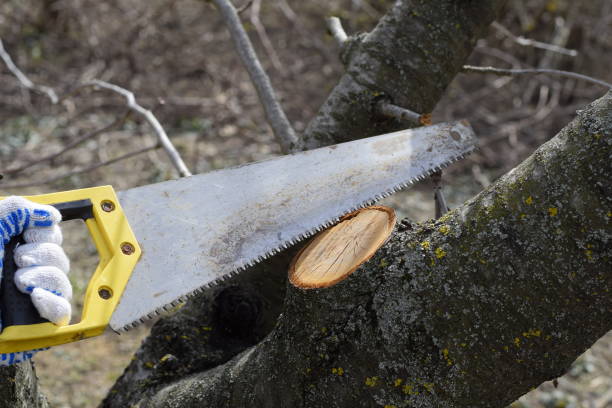Tree trimming is essential to maintaining the health and appearance of trees. However, knowing when to trim them can be as important as the act. You can maximize the benefits and minimize potential risks by timing tree trimming correctly. But what factors should be taken into consideration?
Is a specific season or time of year deemed optimal for this task? We will explore the benefits of timing tree trimming and the factors influencing the best time to trim your trees.
Benefits of Timing Tree Trimming
When is the best time to trim trees to maximize the benefits of this essential maintenance practice? Timing plays a crucial role in the success of tree trimming. The ideal time for tree trimming depends on various factors, such as the type of tree, the purpose of trimming, and the desired outcome.
Generally, the best time to trim trees is during their dormant season, typically in late winter or early spring. Trees are less susceptible to diseases and pests during this time, and their growth is minimal. Trimming during the dormant season promotes new growth in the spring, which helps the tree to retain its shape and health.
Additionally, trimming during this period allows the wounds to heal quickly due to the tree’s reduced sap flow. However, it is important to note that certain tree species have specific pruning requirements and may require trimming at different times of the year. Consulting with a professional arborist is crucial to determine the best time to trim specific tree species for optimal results.
By timing tree trimming appropriately, the benefits of this essential maintenance practice can be maximized, ensuring healthier and more aesthetically pleasing trees.
Factors to Consider for Optimal Tree Trimming
Several factors need to be considered to ensure optimal tree trimming. These factors are crucial in determining when and how trees should be trimmed to promote their health and growth while minimizing potential risks. The first factor to consider is the type of tree. Different tree species have varying growth patterns and requirements, which can influence the timing and extent of trimming. For example, deciduous trees are typically pruned during their dormant season, while evergreen trees may be pruned throughout the year.
Another critical factor is the age and condition of the tree. Younger trees may require frequent trimming to shape their growth and establish a strong structure, while older trees may need maintenance pruning to remove dead or diseased branches. Additionally, the overall health of the tree should be assessed. Trees that are stressed, infested with pests, or affected by diseases may require special attention and trimming at specific times to prevent further damage.
Furthermore, the region’s weather and climate should be considered. Extreme weather conditions, such as high winds or heavy rain, can put the tree and the trimmer at risk. It is important to schedule trimming during periods of calm weather to ensure the safety of the tree and the individuals involved.
Lastly, any local regulations or restrictions regarding tree trimming should be considered. Some municipalities may have specific guidelines on tree maintenance, including restrictions on trimming during certain seasons or requirements for permits. Adhering to these regulations is essential to avoid any legal issues.

